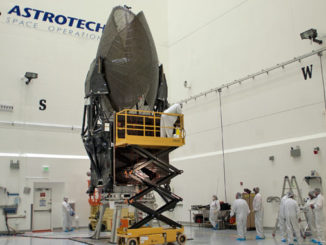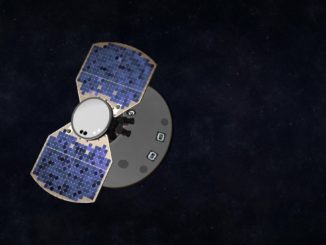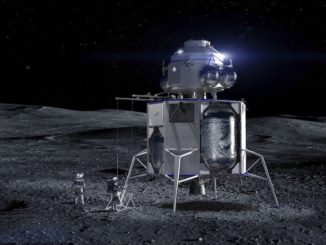
Update 4:36 a.m. EDT: Rocket Lab confirms a successful deployment of NASA’s PREFIRE-1 cubesat.
Update 3:52 a.m. EDT: Liftoff occurred at 3:41 a.m. EDT. Good first and second stage burns. Kick stage ignition
Update 3:30 a.m. EDT: Countdown resumed for a new T-0 of 3:41 a.m. EDT.
Update 3:20 a.m. EDT: Countdown holding due to high ground winds.
Update 10:44 p.m. EDT: Rocket Lab set the T-0 liftoff time for the mission.
NASA is preparing to launch a pair of climate research missions within weeks of each other. The two spacecraft share the name PREFIRE (Polar Radiant Energy in the Far-Infrared Experiment) and are designed to study how much heat is absorbed and emited from Earth’s polar regions, the space agency said.
The first spacecraft, PREFIRE-1, is set to liftoff on May 25 onboard a Rocket Lab Electron rocket at 7:28 p.m. NZST (3:28 a.m. EDT, 0728 UTC). A specific date and time for the second mission has yet to be announced.
“We’re looking for new insights into how Earth’s atmosphere and ice influence how much heat the polar regions lose into space,” said Karen St. Germain, director of NASA’s Earth Science Division, in a prelaunch teleconference. “This is new information and we’ve never had it before. We’ll improve our ability to model what’s happening in the poles, what’s happening in climate, and ultimately, our ability to predict everything from weather to climate.
“This is important to our strategy of providing Earth science that is actionable and can inform decisions for communities around the world on how to respond and adapt to changing environmental conditions.”

St. Germain also noted that by using a pair of CubeSats, instead of larger spacecraft, NASA is exploring ways to create more targeted and agile missions in the future that may not require as much lead time or expense.
Besides the cost and logistics benefit, Tristan L’Ecuyer, the PREFIRE principal investigator from the University of Wisconsin-Madison, said placing the twin craft in slightly different orbits will be critical in the science data they’re looking to gather.
“Having one CubeSat, we’ll be able to sort of map out what the emissions look like in the polar regions, but having a second CubeSat that flies over then, about six hours later, we’ll be able to understand how changes, something like melting of the ice sheet or a cloud forming or an increase in the amount of moisture in the atmosphere, how that affects the emission between the two different CubeSats,” L’Ecuyer said.
“So we’ll be using the two CubeSats to make measurements over the course of several hours apart, taking the difference between those measurements and trying to understand how the processes that are occurring in the Arctic are actually affecting the emission from the Arctic.”
Mary White, the PREFIRE project manager, said each spacecraft is roughly the size of a large shoebox and will be launched into asynchronous, near-polar orbits. To measure the changes mentioned by L’Ecuyer, the spacecraft feature an instrument called a “thermal infrared spectrometer,” which has been flown in larger configurations by both aircraft and spacecraft.
“Although it’s a developing technology, these thermopile detectors, we’re flying more pixels on each detector than had been previously flown,” White explained. “We have an array of eight pixels in the spatial direction by 64 pixels in the spectral direction.”

About an hour and a half after launch, PREFIRE-1 will open up its solar panels to start powering up its batteries. Those on the ground will try to establish communication with it via a ground station about five hours after launch.
White said the spacecraft needs about five days for checkouts before controllers are ready to turn on its main instrument. At that point, they’ll need another roughly five days to checkout the instrument itself. However, White said they budgeted a month for this process, on the off-chance that they need more time.
“We might get into a little bit of calibration in the second half of that month, but we’ll be bringing down data from the instrument, kind of preliminary data, starting probably about five or six days into the mission,” White said.
L’Ecuyer added that it will also take some time to sort through the preliminary data to make it make sense.
“But at the end of a couple of months, we do hope to be able to have new observations of what the clouds look like in the Arctic, what the surface characteristics look like, whether the ice sheet is melting or refreezing and then also information about moisture in the Arctic,” L’Ecuyer said. “[It’s] very hard to measure from the ground because it’s also very inhospitable there, but also very difficult to measure using any other existing satellites.”
The two PREFIRE missions will also mark the 48th and 49th launches for Rocket Lab using its Electron rocket. The satellites will deploy to a 525 km circular Earth orbit at a 97.5° inclination.
Rocket Lab announced it received the mission through NASA’s VADR (Venture-class Acquisition of Dedicated and Rideshare) contract in August 2023. According to a NASA presentation, the mission is cost-capped at $32.78 million.
“We’re tremendously excited and obviously, to launch these two missions and also to ensure that the spacecraft arrive, both of them arrive safely in orbit,” said Peter Beck, the CEO and founder of Rocket Lab.



